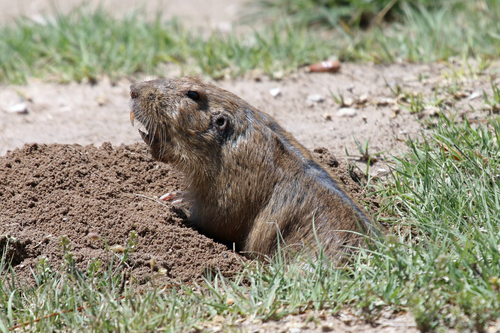
Plains Pocket Gopher
The Plains Pocket Gopher is a master digger, armed with strong claws for tunneling. Its underground burrows aerate the soil, benefiting prairie ecosystems. With cheek pouches for food storage, this solitary rodent thrives in North America's grasslands, showcasing remarkable adaptation to subterranean life.
3-5 years
Lifespan
220.0 - 1000.0 g
Weight
Brown, Tan
Color
16 mph
Top Speed
Least Concern
Conservation Status
Stable
Population Trend
Characteristics
The Geomys bursarius, commonly known as the Plains Pocket Gopher, is a burrowing rodent native to the prairies of central North America. Notable for its powerful forelimbs and large claws, it is highly adapted for digging. These solitary creatures have fur-lined cheek pouches for transporting food and excel in creating extensive underground tunnels, playing a crucial role in soil aeration.
Distribution Range of the Plains Pocket Gopher
Geomys bursarius, commonly known as the Plains Pocket Gopher, is native to North America. Its geographical distribution includes central United States, specifically in states such as Texas, Oklahoma, Kansas, Nebraska, South Dakota, and Minnesota. It is also found in parts of Canada, particularly in Manitoba.
Plains Pocket Gopher's Habitat
Environmental Conditions
The Plains Pocket Gopher typically inhabits prairies, grasslands, and open areas with loose, sandy or loamy soils that are conducive to burrowing. These environments often have moderate to low moisture levels and are found in temperate climate zones.
Ecological Niche
Geomys bursarius is a fossorial mammal, meaning it is adapted for life underground. Its ecological niche involves burrowing and consuming roots and tubers. The species plays a significant role in soil aeration and nutrient distribution, which benefits plant growth. Its burrowing activity also provides habitats for other species.
Copyright @ Nature Style Limited. All Rights Reserved.
 English
English